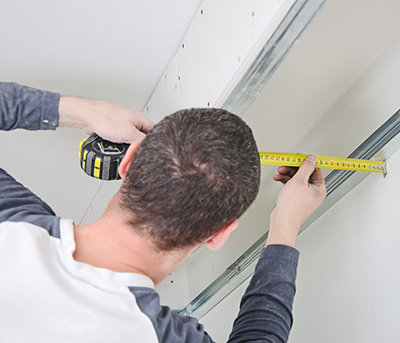To restore and space of drywall that has been damaged you will need sheet rock, a utility knife, fast dry-low mud joint compound, mesh tape for drywall, one inch galvanized drywall screws, a drill, drywall knife and a drywall sanding block. Whereas the compound remains to be moist, place a strip of fiberglass tape over the seam, bridging the gap between the ends of the existing tape (picture 4). Use a putty knife to softly flatten wrinkles and to mattress the tape into the compound. The final step is sanding the world to easy it for portray. In a small bowl, combine four components joint compound and 1 half water.
Sand the wall after the ultimate coat dries. Let dry and sand easy. Your supplies will embrace prepared-combine joint compound; 2-inch drywall tape, both perforated or mesh; taping knives in 4-, 6-, and 10-inch sizes; and four hundred-grit sandpaper and a sanding block. It is high-quality to fill screw holes and different small wall dings with patching compound, but for dime-dimension and larger repairs, and for holes which can be deep, it is best to make use of a joint compound that sets up by a chemical reaction.
A typical drywall drawback, especially in newer houses, is nail pops,†or nail heads that draw back from the wood studs and protrude via the drywall tape or paint. The easiest approach to restore a medium-dimension hole in drywall is to make use of an adhesive-backed metal patch. To start, reduce a bit of the tape and apply over the outlet so the mesh extends beyond the outlet by 1″ around the entire circumference of the hole.
Combine a tablespoon or two of water into three or 4 cups of the joint compound to make it easier to unfold. This patch could require two coats of compound, with dry time in between coats. You may also make your own backerboard from a chunk of scrap plywood or drywall. Place a taping knife or thin plywood behind the software to prevent extra injury to the wall — be especially careful to not lever towards unsupported drywall or the instrument will punch a gap that can require a more intensive restore.
To chop the drywall, you can both lower it with the drywall noticed or use a blade knife to attain and snap it, scoring the front utilizing the blade knife and a straight edge, then snapping it in two items. If the crack is on a vertical or horizontal seam, rigorously widen the crack with the nook of a paint scraper, utility knife or chisel to determine if the crack extends utterly by the paper that is covering the seam (image 2); and if the tape has pulled free from the wall surface.
